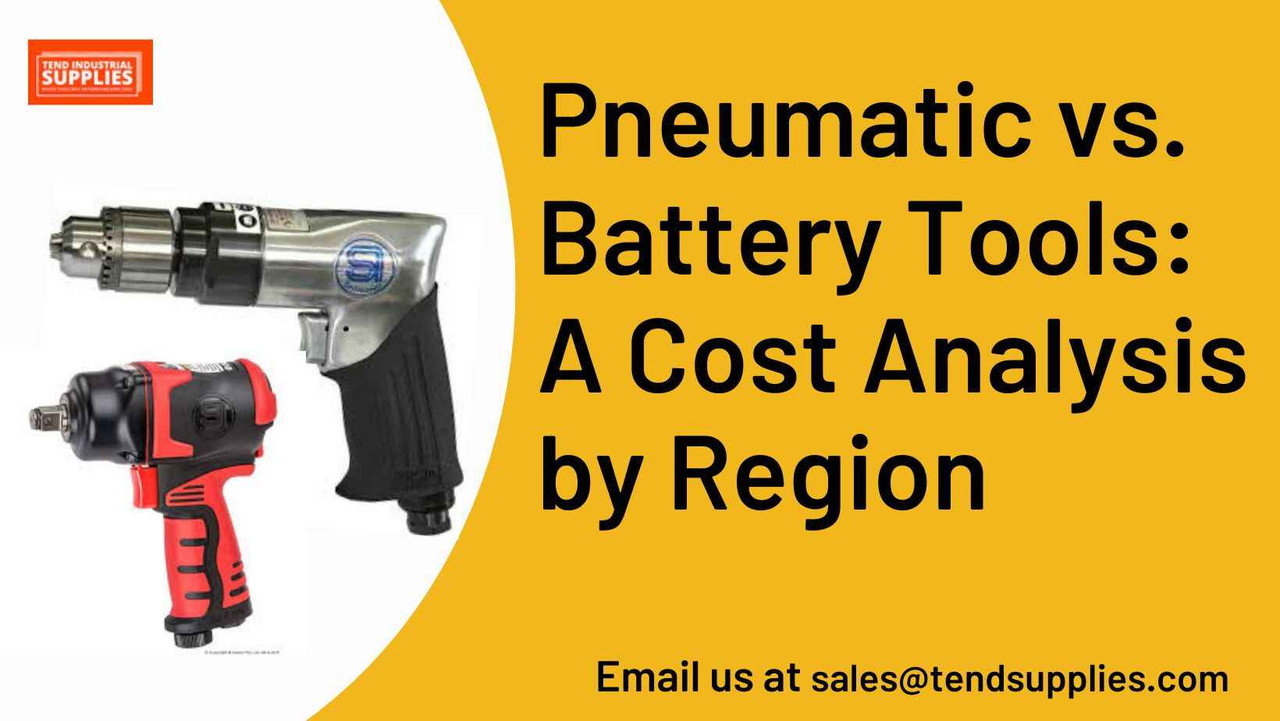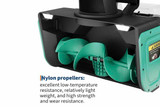Pneumatic vs. Battery Tools: A Cost Analysis by Region
Key Takeaways
- Regional energy costs significantly impact total ownership costs
- Environmental factors affect maintenance expenses
- Initial investment varies by region and application
- Operational costs differ by climate zone
- Long-term value depends on usage patterns
Introduction
Understanding the true cost of ownership for pneumatic versus battery-powered tools requires analyzing multiple regional factors, including energy costs, maintenance requirements, and operational conditions. This comprehensive analysis helps decision-makers select the most cost-effective solution for their specific location and application.
Regional Cost Analysis
Northeast Region Economics
The northeastern United States presents unique cost considerations due to higher energy rates and varied seasonal demands:
Energy Cost Impact: Current regional factors include:
- Average electricity rates: $0.16-0.24/kWh
- Compressed air generation costs
- Seasonal efficiency variations
- Peak demand charges
Operational Considerations: Winter operations affect costs through:
- Increased heating requirements
- Battery performance reduction
- Compressed air moisture management
- Equipment warming needs
Southern Region Expenses
Southern states face different cost factors:
Climate-Related Costs: High temperatures influence:
- Battery cooling requirements
- Compressed air efficiency
- Equipment lifespan reduction
- Maintenance frequency
Energy Considerations: Regional patterns show:
- Lower average electricity rates ($0.09-0.13/kWh)
- Higher cooling demands
- Extended runtime requirements
- Humidity management costs
Initial Investment Analysis
Tool Acquisition Costs
Initial investment comparison reveals significant variations:
Pneumatic Systems: Complete system costs include:
- Air compressor investment ($2,000-$5,000)
- Distribution system ($1,000-$3,000)
- Tool costs ($200-$800 per tool)
- Installation expenses
Battery Systems: Initial outlay covers:
- Tool purchase ($300-$1,200 per tool)
- Multiple batteries ($100-$300 each)
- Charging systems ($200-$500)
- Spare battery requirements
Operational Cost Comparison
Energy Consumption
Understanding energy usage patterns:
Pneumatic Operation: Annual energy costs vary by region:
- Compressor operation: $500-$1,500/year
- System maintenance: $200-$600/year
- Air treatment: $100-$300/year
- Distribution losses
Battery Operation: Yearly expenses include:
- Battery charging: $50-$150/year
- Replacement costs: $200-$400/year
- Charging infrastructure: $50-$100/year
- Climate control needs
Maintenance Requirements for Tools
Regional maintenance costs vary significantly:
Coastal Regions: Enhanced maintenance needs:
- More frequent servicing
- Corrosion protection
- Moisture control
- Environmental protection
Inland Areas: Standard maintenance includes:
- Regular servicing
- Normal wear management
- Routine inspection
- Preventive maintenance
Performance Analysis
Regional Performance Factors
Different regions experience varying performance levels:
Cold Climate Performance: Winter impacts include:
- Battery capacity reduction
- Air system moisture
- Operational delays
- Heating requirements
Hot Climate Considerations: Summer factors affect:
- Battery life reduction
- Cooling requirements
- System efficiency
- Maintenance frequency
Long-Term Value Analysis
Five-Year Cost Projection
Total ownership cost comparison:
Pneumatic Systems: Long-term expenses include:
- Initial investment amortization
- Energy costs
- Maintenance expenses
- System upgrades
Battery Systems: Extended costs cover:
- Tool replacement
- Battery replacement
- Charging infrastructure
- Energy consumption
Frequently asked Questions
1. Which system has lower initial costs?
Battery tools have lower initial costs for single-tool operations, while pneumatic systems become more cost-effective with multiple tools.
2. How do energy costs affect the choice between systems?
Regions with high electricity rates may find pneumatic systems more cost-effective long-term, despite higher initial investment.
3. What's the typical ROI timeframe?
ROI varies by region and usage, typically 12-24 months for pneumatic systems and 6-12 months for battery tools.
4. How do maintenance costs compare?
Pneumatic systems generally have lower per-tool maintenance costs but require system-wide maintenance.
5. Which system is more cost-effective in extreme climates?
Pneumatic systems often prove more cost-effective in extreme climates due to better temperature tolerance.
Related Articles
- Power Tools vs. Hand Tools Comparison
- The Power Struggle: Pneumatic vs. Electric Tools
- Cost Efficiency Analysis Guide
- Energy Efficiency in Air Compressors
Conclusion
Make an informed decision about your tool investment based on your specific regional factors and operational needs. Contact Tend Industrial Supplies for expert guidance on selecting the most cost-effective tool solution for your location.
Contact us today:
- Email: sales@tendsupplies.com
- Visit:www.tendsupplies.com
- Browse our tool selection
Let our experts help you analyze your specific needs and regional factors to choose the most cost-effective tool solution for your operation.







